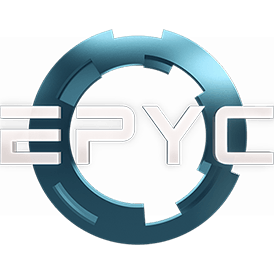
Porównaj Intel Celeron G5930T VS AMD Epyc Embedded 3351. Which processor delivers superior performance?
In this detailed comparison, we evaluate the specifications and benchmarks of both processors to determine the best choice for your needs. We analyze their core counts, maximum frequencies, and power consumption.
Intel Celeron G5930T boasts a maximum frequency of 3.50 GHz GHz. 2 cores that enhance multitasking capabilities.With a power consumption of 35 W W, it ensures efficient performance.Wydany w Q1/2021, it incorporates the latest technology for optimal efficiency.
AMD Epyc Embedded 3351 features a maximum frequency of 1.90 GHz GHz. 12 / 24 cores designed for high-performance tasks.Its power consumption is 80 W W, providing a balance of power and efficiency.Launched in Q1/2018, it is built to handle demanding applications.
 Powody do rozważenia
Powody do rozważenia Wyższa prędkość zegara
Wokół 46% lepsza prędkość zegara
Wydajność na wat
mniej ciepła wytwarzanego przez procesor, W.
Wspólne stanowiska Intel Celeron G5930T Procesor w popularnych benchmarkach, dla porównania z innymi modelami.
 Powody do rozważenia
Powody do rozważenia Większa liczba rdzeni
About 6 Więcej rdzeni
Wspólne stanowiska AMD Epyc Embedded 3351 Procesor w popularnych benchmarkach, dla porównania z innymi modelami.
No data Intel Celeron G5930T
Intel Celeron G5930T

Comprehensive background on the processors being compared, detailing their series, generation, and targeted market segment.
Essential parameters including the number of cores, threads, base and turbo frequencies, and cache size. These metrics provide insight into the processor’s speed—higher values generally indicate better performance.
The integrated graphics (iGPU) do not influence the CPU performance significantly; they serve as a substitute for a dedicated graphics card in the absence of one or are utilized in mobile devices.
This section details the built-in codecs used for encoding and decoding media content, which significantly enhance processing speed and efficiency.
Overview of the types and quantities of RAM supported by AMD Epyc Embedded 3351 oraz Intel Celeron G5930T. The supported memory frequencies may vary depending on the motherboard configuration.
Analyze the TDP (Thermal Design Power) requirements of Intel Celeron G5930T oraz AMD Epyc Embedded 3351 to make an informed decision on the appropriate cooling system. Remember that TDP refers to thermal watts, not electrical watts.
Information on architecture, interfaces, and additional instructions supported by Intel Celeron G5930T oraz AMD Epyc Embedded 3351, including virtual machine technologies and fabrication processes.
By analyzing the results from various benchmarks, you can gain a clearer understanding of the performance differences between Intel Celeron G5930T oraz AMD Epyc Embedded 3351.
Compare the synthetic benchmark scores and make an informed decision on the best processor for your needs!